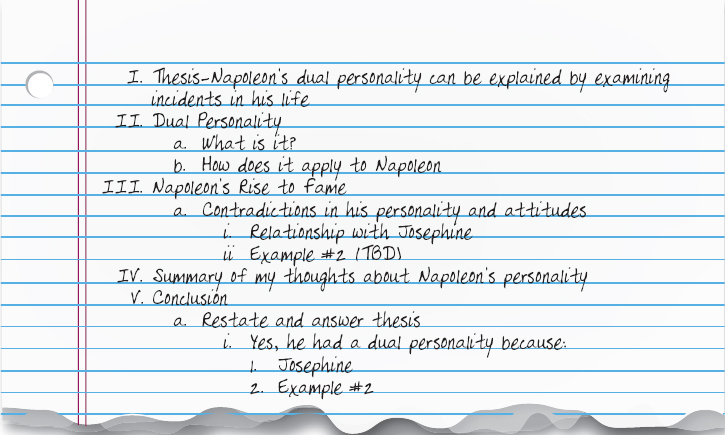Step Two: Writing or Drafting
Once you have completed your research and you and your librarian have exhausted the information sources and ideas, it’s time to move to the writing, or drafting, stage. It might be a good idea to begin with a thesis statement and an outline so that you can put things where they logically belong. A thesis statement is a short statement that clearly defines the purpose of the paper (see Figure 10.3).
thesis statement A short statement that clearly defines the purpose of the paper.
Many people find creating an outline to be a helpful exercise that creates a manageable path from your thesis to your conclusion. See Figure 10.4 for an example. Once you’ve set the structure for your paper, you then support the sections with analysis and synthesis of your research findings, and you’re well on your way to a final draft. Now, with your workable outline and thesis, you can begin to pay attention to the flow of ideas from one sentence to the next and from one paragraph to the next, including subheadings where needed. If you have chosen the thesis carefully, it will help you check to see that each sentence relates to your main idea. When you have completed this stage, you will have the first draft of your paper in hand.

